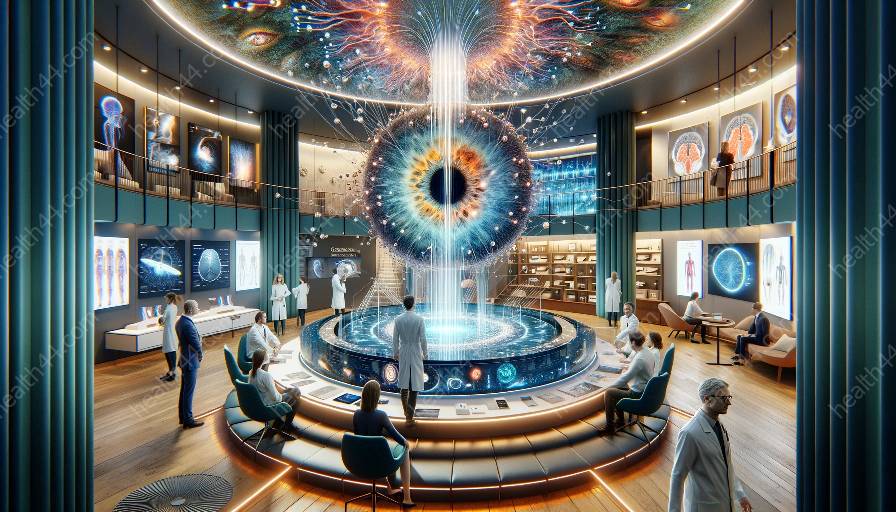Visual perception encompasses the processes through which individuals interpret and make sense of the visual information around them. In the context of vision rehabilitation, techniques to improve visual perception play a vital role in enhancing the overall visual experience. By focusing on the integration of various sensory inputs and cognitive functions, individuals undergoing vision rehabilitation can significantly improve their visual perception. Let's explore the key techniques and strategies that contribute to enhancing visual perception in the context of vision rehabilitation.
1. Visual Training Programs
Visual training programs are designed to strengthen visual skills and optimize functioning through a series of structured exercises. These programs often include activities that target specific visual processes such as eye tracking, fixation, focus shifting, and depth perception. By engaging in regular visual training, individuals can improve their ability to interpret and process visual information, leading to enhanced visual perception.
2. Sensory Integration Techniques
Sensory integration techniques involve the coordination of various sensory inputs, including visual, auditory, and tactile stimuli. In the context of vision rehabilitation, integrating visual information with other sensory modalities can help individuals adapt to their visual impairment and improve their overall perception. For example, sensory integration exercises may involve combining visual cues with tactile or auditory feedback to enhance spatial awareness and perception.
3. Environmental Modifications
Modifying the environment to optimize visual perception is an essential strategy in vision rehabilitation. By adjusting lighting, reducing glare, and maximizing contrast, individuals can create an environment that enhances their ability to perceive and interpret visual information. Environmental modifications can also include the reorganization of physical spaces to improve navigation and facilitate visual recognition of objects and obstacles.
4. Cognitive Rehabilitation
Cognitive rehabilitation techniques focus on enhancing cognitive functions that are crucial for visual perception, such as attention, memory, and problem-solving. By targeting cognitive processes that support visual processing, individuals can improve their ability to make sense of visual input and effectively interpret the surrounding environment. Cognitive rehabilitation interventions often incorporate tasks that require visual attention, pattern recognition, and visual memory exercises.
5. Assistive Technology
The use of assistive technology plays a significant role in improving visual perception for individuals undergoing vision rehabilitation. From magnification devices and screen readers to advanced visual aids, these technologies aim to enhance visual access and support individuals in overcoming visual challenges. By leveraging assistive technology, individuals can maximize their visual functioning and improve their overall visual perception.
6. Multisensory Training
Integrating multiple sensory modalities through multisensory training can be highly beneficial for improving visual perception in vision rehabilitation. By engaging in activities that involve coordinated multisensory inputs, such as visual, auditory, and tactile stimuli, individuals can enhance their ability to process and interpret complex visual information. Multisensory training programs often focus on enhancing spatial awareness, object recognition, and overall sensory integration.
7. Adaptive Strategies and Skills Training
Developing adaptive strategies and skills training is essential for individuals undergoing vision rehabilitation to improve their visual perception. This may involve learning new techniques for interpreting visual cues, navigating the environment, and utilizing alternative sensory modalities effectively. By acquiring adaptive skills and strategies, individuals can compensate for their visual impairments and enhance their overall visual perception.
8. Psychological Support and Counseling
Addressing the psychological aspects of vision loss and rehabilitation is crucial for improving visual perception. Providing psychological support and counseling can help individuals manage the emotional impact of vision loss and develop coping strategies that contribute to improved visual perception. By addressing psychological barriers, individuals can approach vision rehabilitation with a positive mindset, which is essential for optimizing visual outcomes.
Conclusion
Improving visual perception in vision rehabilitation requires a comprehensive and holistic approach that integrates various techniques and strategies. By incorporating visual training programs, sensory integration techniques, environmental modifications, cognitive rehabilitation, assistive technology, multisensory training, adaptive strategies, and psychological support, individuals undergoing vision rehabilitation can enhance their overall visual experience. Emphasizing the importance of a multi-dimensional approach to visual perception can lead to improved quality of life and increased independence for individuals with visual impairments.





















